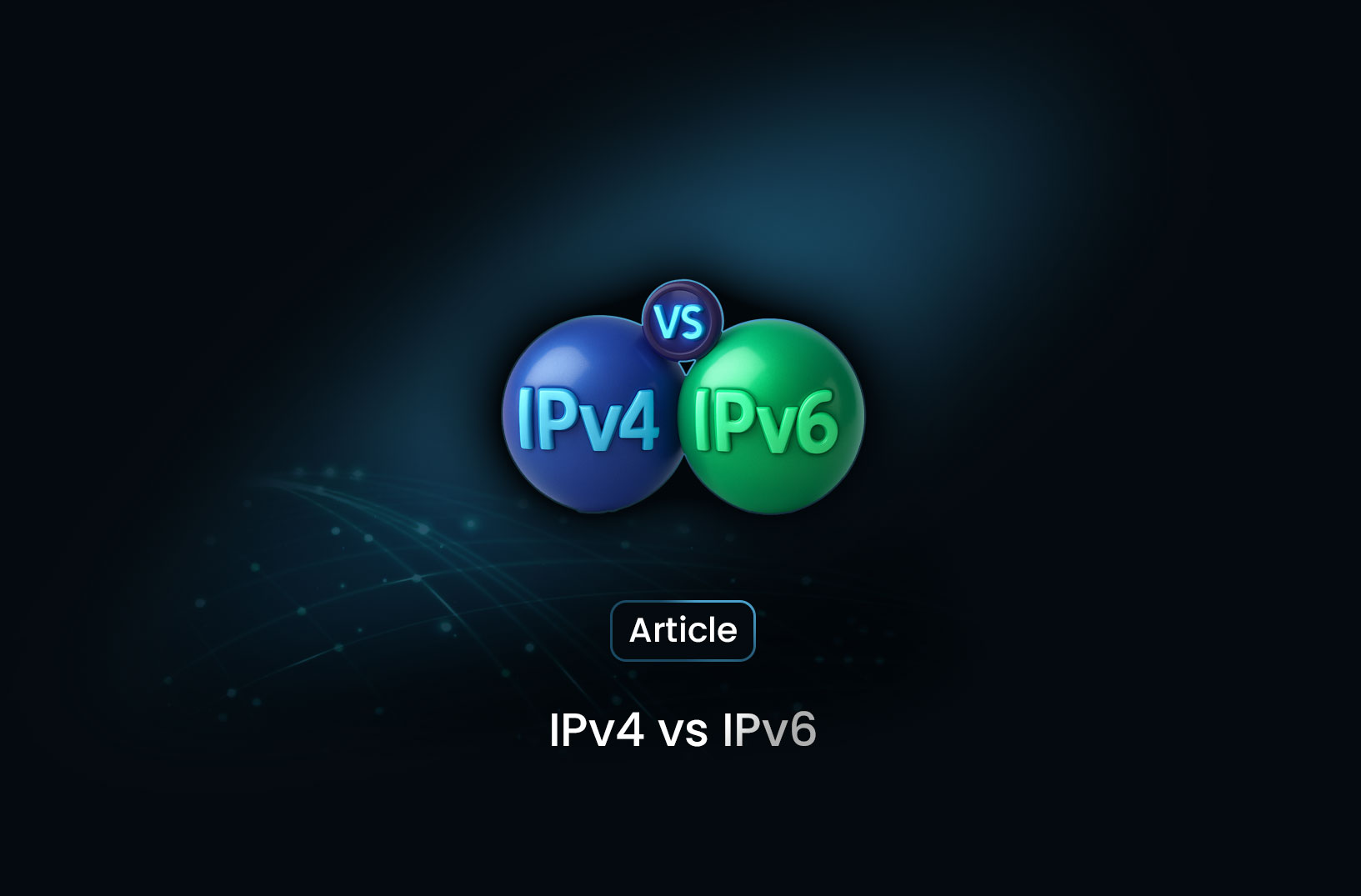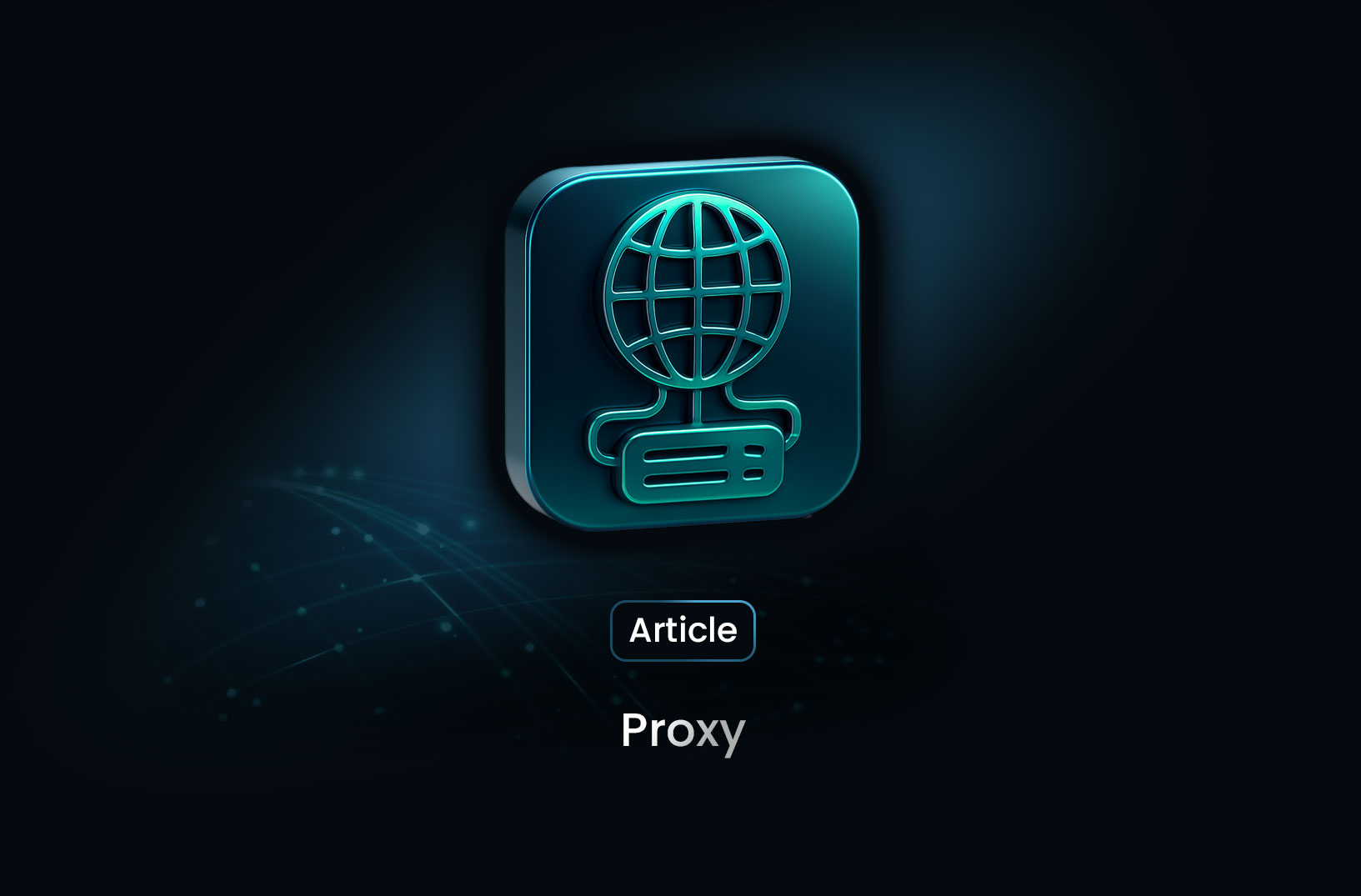
IPv4 vs IPv6 for Beginners: Simple Comparison
ArticleIPv4 (Internet Protocol version 4) is the most widely used internet protocol today. It uses a 32-bit numeric address system, which looks like 192.168.1.1.
As the number of internet-connected devices grows every day—smartphones, laptops, sensors, and more—the need for more IP addresses has become urgent. That’s why the world is gradually moving from IPv4 to IPv6.
In this blog, we’ll break down the core differences between IPv4 and IPv6, explain why IPv6 is essential for the future of the internet, and share how this shift affects web-based technologies like data scraping.
What Is IPv4?
IPv4 (Internet Protocol version 4) is the most widely used internet protocol today. It uses a 32-bit numeric address system, which looks like 192.168.1.1.
- Supports around 4.3 billion unique addresses
- Developed in the early 1980s
- Commonly used in most devices and websites
- Requires NAT (Network Address Translation) to deal with IP address shortages
What Is IPv6?
IPv6 (Internet Protocol version 6) was introduced as a long-term solution to the limitations of IPv4. It uses a 128-bit address format like 2001:0db8:85a3:0000:0000:8a2e:0370:7334.
- Offers approximately 3.4×10³⁸ unique IP addresses
- Designed to scale with global internet growth
- Supports automatic configuration and improved routing
- Eliminates the need for NAT by allowing each device its own public IP address
IPv4 vs IPv6: Key Differences
| Feature | IPv4 | IPv6 |
|---|---|---|
| Address Length | 32-bit | 128-bit |
| Address Format | Decimal (e.g., 192.168.0.1) | Hexadecimal (e.g., 2001:db8::1) |
| Total Addresses | ~4.3 billion | ~340 undecillion (3.4×10³⁸) |
| Header Complexity | Complex, needs manual configuration | Simplified, supports auto-configuration |
| NAT Usage | Required due to address shortage | Not required |
| Broadcast | Supported | Not supported (uses multicast instead) |
| Security | Optional IPsec | IPsec is mandatory |
| Configuration | DHCP required | Stateless auto-configuration |
| Performance | May involve translation delays | Faster due to direct connections |
| Adoption | Still dominant | Growing globally |
Why IPv6 Was Introduced
The main reason IPv6 was developed is to handle the explosive growth of devices on the internet. IPv4's limited address space could no longer meet the demands of modern usage. As more people and machines connect, IPv6 ensures we have enough addresses to accommodate everything from mobile phones to smart cities.
Benefits of IPv6
IPv6 isn’t just about more addresses—it offers many other advantages:
-
Scalability Provides a nearly limitless number of IP addresses for current and future devices.
-
Improved Performance Eliminates the need for NAT, allowing faster and more efficient connections.
-
Enhanced Security IPv6 was built with IPsec as a standard, providing stronger encryption and authentication.
-
Simplified Configuration Devices can configure themselves without needing a DHCP server.
-
Better Support for Streaming and Real-Time Apps With built-in multicast and Quality of Service (QoS), IPv6 performs better for services like video calls, games, and live events.
Challenges in Migration
Despite its benefits, the move to IPv6 isn’t always easy. Many organizations still rely on IPv4 for legacy reasons.
-
Dual-Stack Systems Most networks today use both IPv4 and IPv6 to maintain compatibility.
-
Hardware Limitations Older devices might need upgrades or may not support IPv6 at all.
-
Training and Awareness IT teams need to learn how to configure, secure, and monitor IPv6 networks effectively.
Where We Are Today
IPv6 adoption continues to grow. Major tech platforms like Google, Facebook, and YouTube are fully IPv6-compatible. Countries like India and the U.S. are leading adoption rates. Still, IPv4 remains in heavy use, particularly in regions or systems with limited infrastructure updates.
The transition is ongoing, but the industry is steadily shifting toward a future where IPv6 becomes the norm.
Final Thoughts
IPv6 solves the limitations of IPv4 and brings major improvements in scalability, security, and performance. As the internet evolves, IPv6 ensures it remains sustainable, accessible, and efficient for the decades to come.
At MrScraper, we stay ahead of the curve by ensuring our scraping tools and proxy infrastructure work seamlessly with both IPv4 and IPv6 environments. Whether you're building a data pipeline, monitoring competitors, or collecting insights at scale, MrScraper has you covered.
Start scraping smarter—visit MrScraper.com and build with future-ready tools today.
Find more insights here

Proxy 101: What Is a Proxy and Why It Matters for Web Scraping
Learn what a proxy is, how it works, the different types of proxies, and why proxies are essential f...

LunaProxy vs PYPROXY — Which Proxy Service Fits Your Needs in 2025?
Compare LunaProxy and PYPROXY in 2025 to find out which proxy service fits your scraping, automation...

7 Most Effective AI Web Scraping Tools for Automated Data Extraction in 2025
A look at 7 AI web scraping tools that stand out in 2025—what they offer, how they work, and why MrS...
